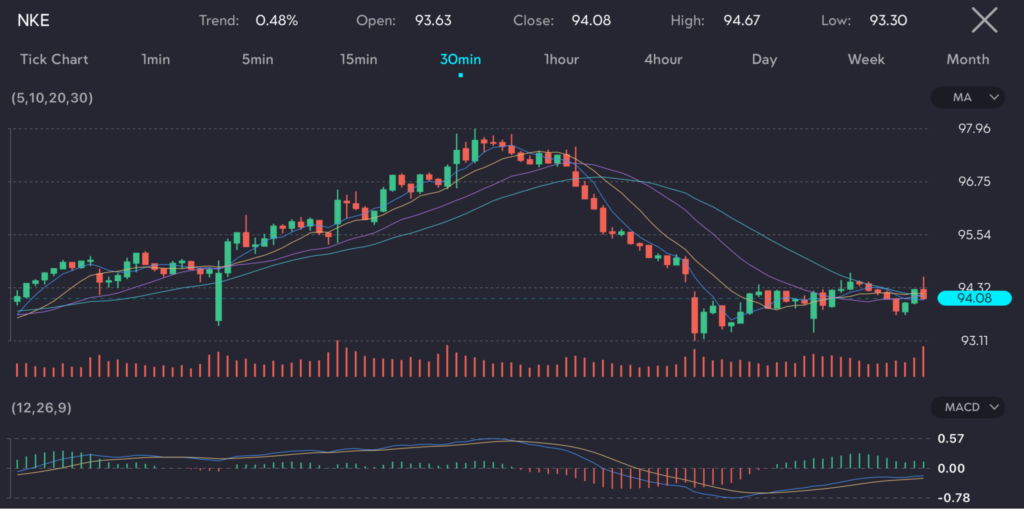Key points:
- The net profit of Nike for the quarter ended May 31 exceeded expectations by 15.11%.
- Revenue fell 1.7% to $12.61 billion, missing the expected $12.86 billion.
- Footwear sales in North America dropped 6% to $3.59 billion, contributing to a 1% decline in the market as a whole.
- Direct revenue decreased by 8% to $5.1 billion, while wholesale revenue increased by 5% to $7.1 billion.
The latest financial results of Nike (Symbol: NKE) revealed a challenging quarter marked by a decline in revenue and significant drops in sales within its key North American footwear market.
The stock price fell 5.5% in post-market trading, reaching $89.00 per share, and has declined 14% since the beginning of the year. This makes Nike one exception to the Dow Jones Industrial Average which outperforms other US stock indices.
Related article: Dow Jones outperforms as tech stocks slump alongside broad market selloff
Despite a better-than-expected net profit of $1.5 billion for the quarter, Nike experienced a notable 1.7% drop in overall revenue to $12.61 billion.
This decline illustrates the challenges the company faces in maintaining its market position as it faces strong competition and changing consumer preferences. The drop in direct revenue by 8% further emphasises the need for Nike to reassess its direct-to-consumer strategies.

The image above shows the dip in Nike stock price, as observed on the VT Markets app.
Footwear sales decline in a competitive landscape
The significant 6% decline in North American footwear sales to $3.59 billion is particularly concerning, given that North America is a crucial market for Nike. The overall 1% market decline in the region underscores broader market challenges and intensified competition from rival brands.
This drop suggests that consumers might be shifting preferences or that the current offerings of Nike are not meeting market expectations.
Executives have acknowledged the setbacks, particularly in the critical running category, and are committed to doubling down efforts to regain market share. Strategic shifts in product development, marketing, and competitive positioning are likely.
Nike continues to face fierce competition from other athletic brands such as Adidas, Under Armour, and emerging market players. These competitors are not only innovating but also aggressively capturing market share through targeted marketing campaigns and new product lines.
How Nike responds to these competitive pressures will be crucial in determining its future market performance.
Risks and opportunities for traders
The recent earnings report of Nike showcases the challenges it faces in maintaining its market position in the face of strong competition and evolving consumer preferences.
While strategic adjustments may offer a pathway to recovery, increased volatility and liquidity allows traders to capitalise on short-term price movements. Navigating these dynamics requires careful monitoring of market trends, company developments and risk management.









